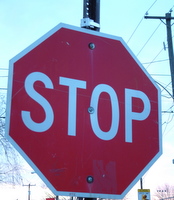Everyone wants their content to be accessible to as many people as possible, why not change the way you do things slightly to open your blog up to a whole different audience? It isn’t that hard, a few minor tweaks.
 Blogs are an inherently visual media, from layout to color choice each decision that you make sets the website up as a canvas to be viewed. The problem with thinking that way is that there is a very voracious group of users who crave knowledge and want to consume content but are visually impaired, so you canvas means nothing to them, or does it?
Blogs are an inherently visual media, from layout to color choice each decision that you make sets the website up as a canvas to be viewed. The problem with thinking that way is that there is a very voracious group of users who crave knowledge and want to consume content but are visually impaired, so you canvas means nothing to them, or does it?
As it turns out some small design changes can make your blog, or website much more accessibility to blind and visually impaired users. A quick run down of the changes and choices which you need to take into consideration when designing your site, or making changes to the layout. Build from the left to the right, Putting your blog-roll on the right hand side allows for the first content picked up by screen readers to be the content of your site, and not the sites you link to.
 I would hope that no one has auto-play turned on on some sort of music on their site, quite a few sites in the late 90’s had this by default, Myspace is famous for assaulting the ears of many with whatever pop ballad you were feeling that day. But it also makes your site invisible to screen readers, as the music plays over the reader. Hat tip to Matthew Ebel for explaining this at the last Podcamp Philly, I had always avoided the music because it was tacky, his explanation gave substance to the reasoning.
I would hope that no one has auto-play turned on on some sort of music on their site, quite a few sites in the late 90’s had this by default, Myspace is famous for assaulting the ears of many with whatever pop ballad you were feeling that day. But it also makes your site invisible to screen readers, as the music plays over the reader. Hat tip to Matthew Ebel for explaining this at the last Podcamp Philly, I had always avoided the music because it was tacky, his explanation gave substance to the reasoning.
Always use the ALT text for images, if you put an image into your post, which I suggest you do as a way to break up the content, always add the description into the image. Be short and to the point describing the content of the image. You can see the alt text for existing images but hovering your mouse over the image, after a few seconds the text will appear on your screen. If nothing pops up chances are that image is white space to visually impaired readers.
Avoid using terms like Click Here, when describing links. This is just good web design, and good SEO. The sites and pages you link to gain and loose PageRank based off of the descriptive keywords you use to link to them. The reasons just multiply when you consider visual impaired readers who have no context to judge the link if click here is the only provenance given.
I’ve said this before but people also need to take into consideration people who are color blind when designing their sites, if elements needed to navigate your site disappear if someone is colorblind you are cutting a good portion of people out of your possible audience. You can always check to see how your site looks to the color blind.
The more barriers you place in between your readers and your content the less likely people are to stick around, it doesn’t matter how awesome you are, or how insightful your content might be, if no one can read it, it doesn’t matter.

